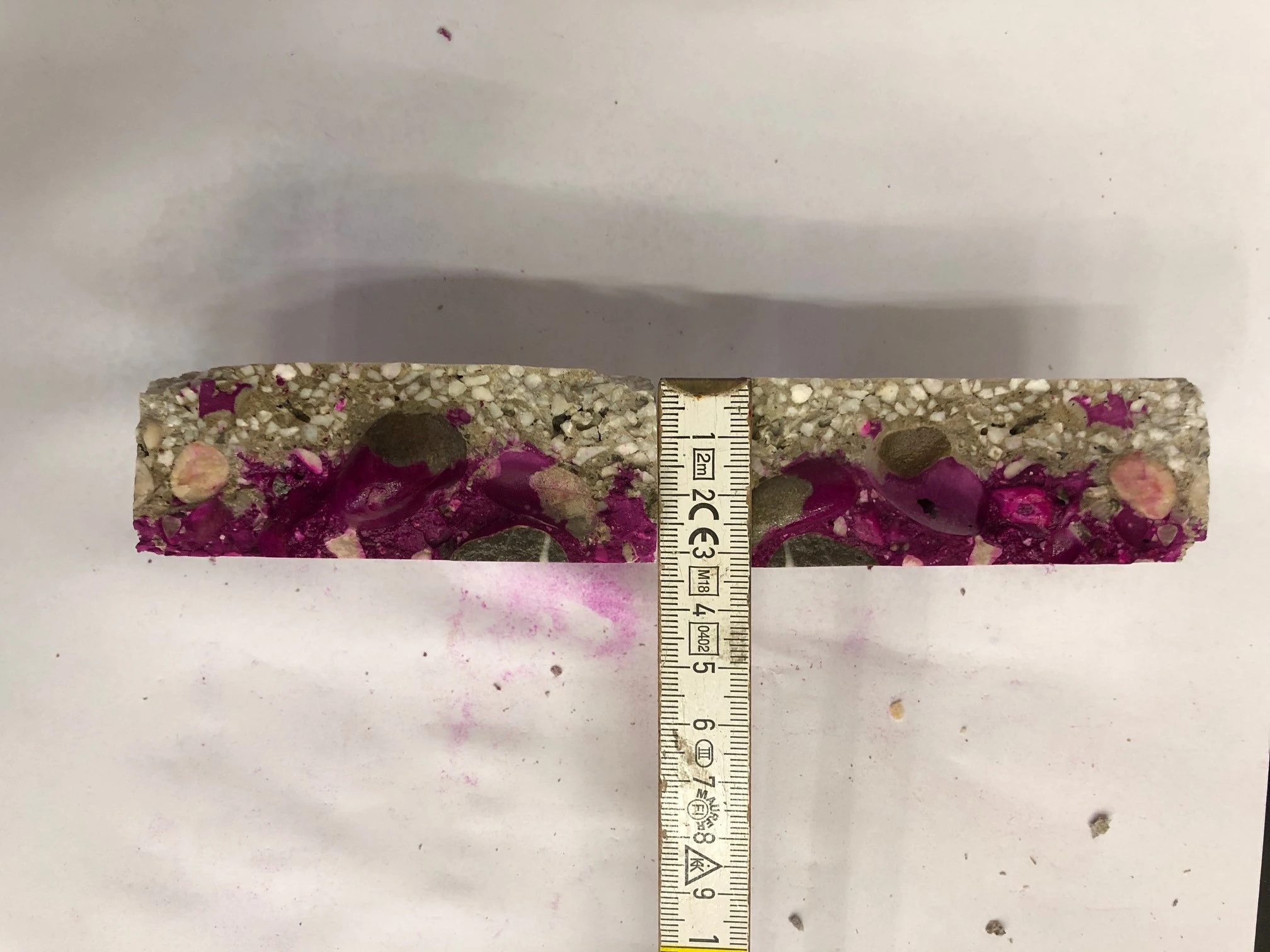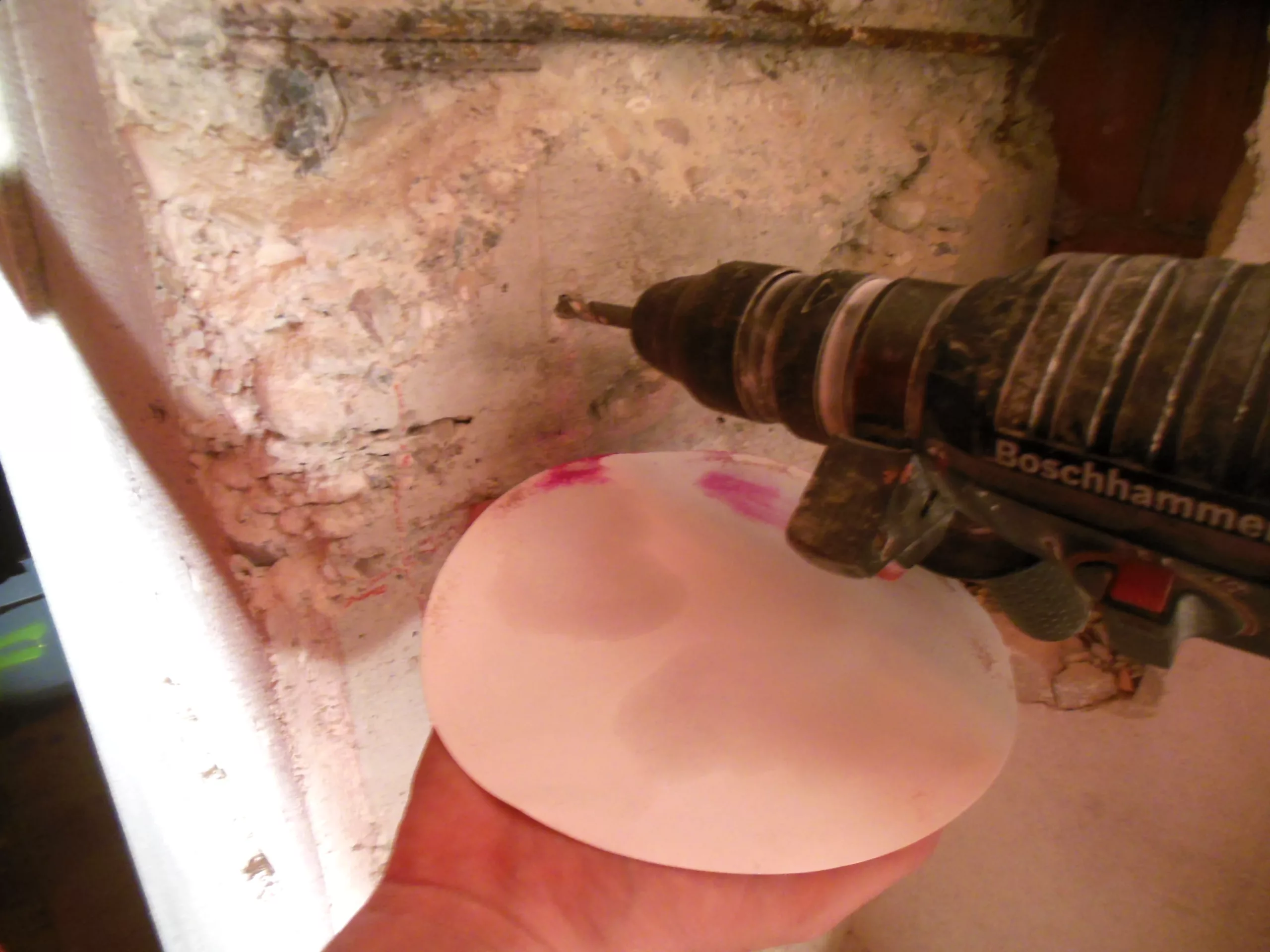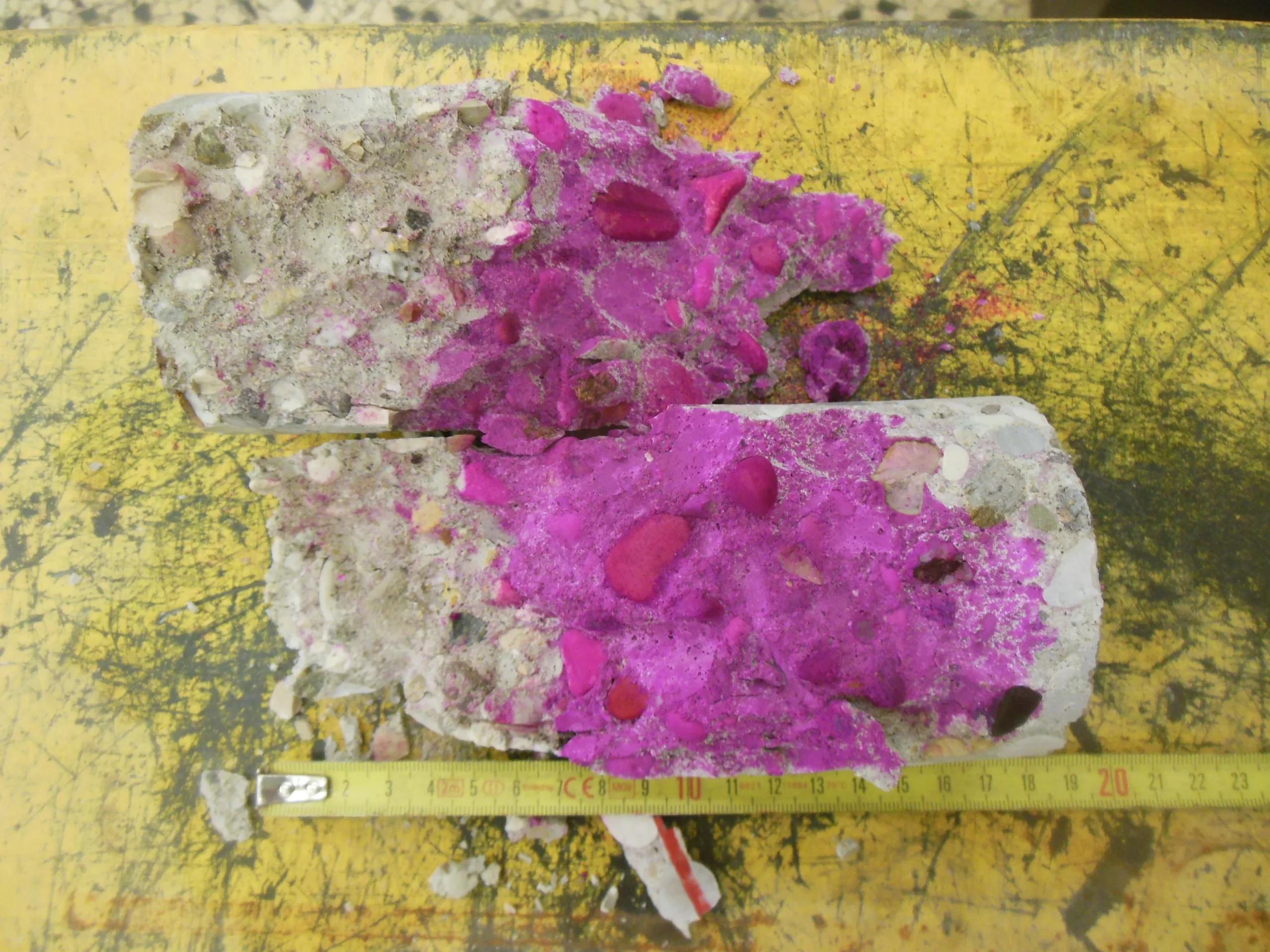


Carbonation test on concrete
The depth of carbonation is determined on the outer surface of extracted concrete cores, on their internal surface when they are split along planes perpendicular to the surface exposed to the air, or on site by taking concrete samples by chiselling or by analysing the extracted dust by drilling at various depths. The surface of the exposed concrete conglomerate is then sprayed with a 1% phenolphthalein solution in ethyl alcohol using a nebulizer. The depth of carbonation should normally be determined immediately after sampling. The pink colour of the sprayed sample indicates the absence of carbonation (alkaline pH ≈ 12); conversely, the absence of colour indicates that the pH has dropped significantly (pH ≈ 9), exposing the rebars to oxidation as a result of the loss of protection provided by the initially alkaline cement paste.
Reference standards: UNI 9944:1992, UNI 14630:2007.
